The Eiger whose name means Ogre needs little introduction. Famed for its fearsome north wall, it is one of the most recognized peaks in the world. An ascent of this legendary peak by the Mittellegi Ridge or the South Ridge is one of the finest expeditions of its standard in the Alps and is on the list of every aspiring alpinist. Our tried and tested program managed by our own IFMGA guides gives you the highest chances of success.
The Eiger, Mont Blanc and the Matterhorn are considered to be the ‘big 3’ of the Alps, so climbing the Eiger by any route is an important milestone for alpinists. The notoriety of the peak is largely thanks to the monstrous 2000m North Face. The epic battles which have taken place on the Nordwand - a 2,000m wall of near vertical rock are well documented in mountaineering literature and have guaranteed the Eiger a place in history.
All the routes to the summit are demanding and serious, requiring exacting technique and a well-planned approach. Our favoured route, which is the most aesthetic, is to traverse the peak via the Mittellegi Ridge and descend via the South ridge. However, in certain conditions, we would opt to both ascend and descend via the South ridge. The Mittellegi Ridge occupies the left edge of the North Face and rises in steep and imposing steps to cumulate in a fine and sharp snow crest leading to the summit. The route is considered more difficult than the Hornli Ridge on the Matterhorn and was the last of the great ridges of the Oberland to be climbed in 1921.
Our course starts and ends in the classic alpine centre of Grindelwald, which is in the heart of the Swiss Bernese Oberland. Throughout the week, in addition to the Eiger, we climb a number of other magnificent peaks in the area, notably the Monch, Jungfrau and Gross Grunhorn.
Conditions on the Eiger can be changeable from day to day, our itinerary has been carefully put together to allow the flexibility required for this summit.
How difficult is the Eiger?
Both the Mittellegi Ridge and the South Ridge are graded AD and principally climbed on rock. The descent of the peak is long and challenging in its own right. So this is a route for experienced alpinists only. You should be able to climb rock in big boots at a grade of 3 and 4+ (UIAA). There are long easier sections of climbing so you should be able to travel confidently and fluidly on narrow ridge crests. Recent rock climbing and/or scrambling experience is essential, plus a structured fitness plan before you arrive. This will make the trip safer and considerably more enjoyable.
If you feel you need extra training before your Eiger attempt, we offer additional training days both in the Alps and the UK.
What is the standard of accommodation?
When in Grindelwald we use a good quality hotel, the rest of the week is based in mountain huts. The huts are run by full-time staff that looks after us on a half-board basis, the cooking is hearty homemade food. Water, beer, wine and a picnic lunch is available at extra cost. The sleeping quarters are communal.
The Eiger whose name means Ogre needs little introduction. Famed for its fearsome north
wall, it is one of the most recognised peaks in the world. An ascent of this legendary peak
by the Mittellegi Ridge or the South Ridge is one of the finest expeditions of its standard
in the Alps and is on the list of every aspiring alpinist. Our tried and tested program
managed by our own IFMGA guides gives you the highest chances of success.
The Eiger, Mont Blanc and the Matterhorn are considered to be the ‘big 3’ of the Alps, so
climbing the Eiger by any route is an important milestone for alpinists. The notoriety of the
peak is largely thanks to the monstrous 2000m North Face. The epic battles which have
taken place on the Nordwand - a 2,000m wall of near vertical rock are well documented in
mountaineering literature and have guaranteed the Eiger a place in history.
All the routes to the summit are demanding and serious, requiring exacting technique and a
well planned approach. Our favoured route, which is the most aesthetic, is to traverse the
peak via the Mittellegi Ridge and descend via the South ridge. However in certain conditions
we would opt to both ascend and descend via the South ridge. The Mittellegi Ridege
occupies the left edge of the North Face and rises in steep and imposing steps to cumulate
in a fine and sharp snow crest leading to the summit. The route is considered more difficult
than the Hornli Ridge on the Matterhorn and was the last of the great ridges of the
Oberland to be climbed in 1921.
Our course starts and ends in the classic alpine centre of Grindelwald, which is in the heart
of the Swiss Bernese Oberland. Throughout the week, in addition to the Eiger, we climb a
number of other magnificent peaks in the area, notably the Monch, Jungfrau and Gross
Grunhorn. For the full six days we use a 1:1 guiding ratio; this ensures we give the correct
technical training and care and to maximise your chances on this incredible challenge.
Day Itinerary
-
Arrival
Travel to Grindelwald to arrive at our comfortable partner hotel for the 7pm welcome meeting and briefing. There will be a kit check including the option to rent equipment.
-
Classic peaks of the Oberland
Using the Konkordia, Finsteraarhorn and Monchjoch huts we enjoy 3 days of classic mountaineering while maintaining a flexible approach. The serves as acclimatisation and training as well as some magnificent climbing.
The principal summits are:
Monch (4107m)
Jungfrau (4158m)
Gross Grunhorn (4044).
-
Ascent of the Eiger
We start from either the Mittellegi hut (Mittellegi Ridge) or from the Monchjoch hut (South Ridge). Either way an alpine early start is needed, the typical climbing time for the round trip is 9-10 hours. After the ascent we descend the Jungfrau mountain railway back to Grindelwald.
-
Classic Routes if the Oberland
Gross Grünhorn 4044m
The most climbed route is the normal route from the Konkordia hut over the Grünegghorn. The route goes over glaciers, snow and rock up to the final summit ridge of the Gross Grünhorn. The route is graded II or PD+. If the circumstances don’t permit fast climbing there is always the possibility to limit the climb to the Grünegghorn which is a nice goal in itself. The view from the top is one of the best in the range due to its central location.
Finsteraarhorn 4274m
The Finsteraarhorn is the highest mountain in the Bernese Oberland, and is located central in the range. The peak is one of the most remote in the Alps, the nearest road being at least 2 days away. The normal route climbs the South West Flank and North West Ridge and is graded PD. The climb starts on the steep snow slope behind the Finsteraarhorn hut (3048m) and crosses the wide face from right to left. The summit ridge is an airy climb on mixed ground. In total there is 1200m of ascent which takes 5-6 hours.
Mönch 4107m
The Monch is the central peak in the famous trilogy ‘Eiger, Mönch, Jungfrau’, and due to easy access is also the most popular. The Southeast Ridge is considered the normal route and is graded PD. This route, while never severe, includes some very exposed ridge climbing both on snow and on the fine gneissic rock which makes up the core of the Oberland. There is 500m of vertical ascent which takes around 3 hours.
The Jungfrau 4158m
The Jungfrau is one of the most well known mountains in Switzerland. The Ordinary route to the summit is graded PD +. There are passages of snow and ice up to 40° - 50°. The ascent involves 850m elevation gain and takes approx 4 hrs. Starting out before daylight, the route crosses the Jungfraufirn, and climbs steep mixed snow and rock to the Rottalsattel, at the base of the summit tower. From here, there is a traverse across a steep snow and ice slope which leads to the easy but somewhat airy rock of the summit ridge.
 Off-Piste
Off-Piste Ski Touring
Ski Touring Via Ferrata
Via Ferrata Ice Climbing
Ice Climbing Alpine Glacier Trekking
Alpine Glacier Trekking Worldwide Trekking
Worldwide Trekking





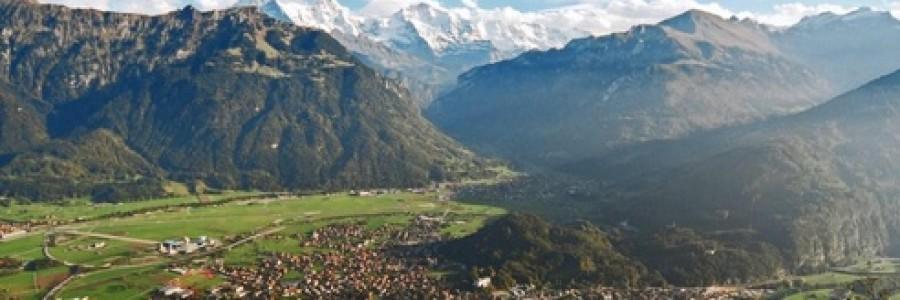

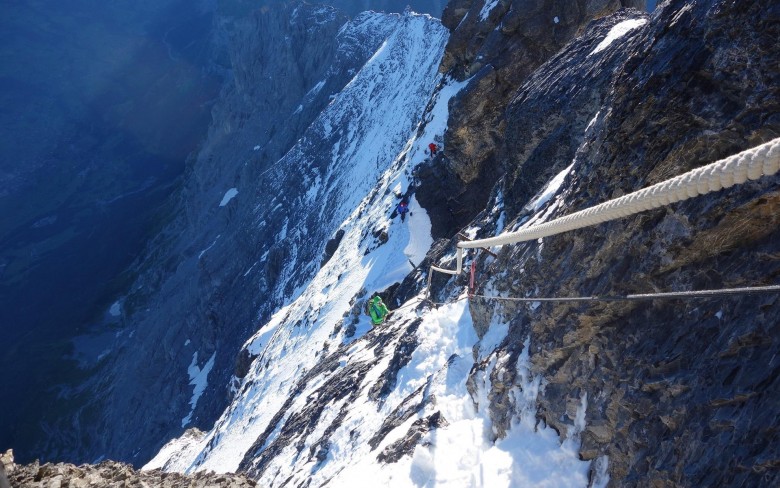
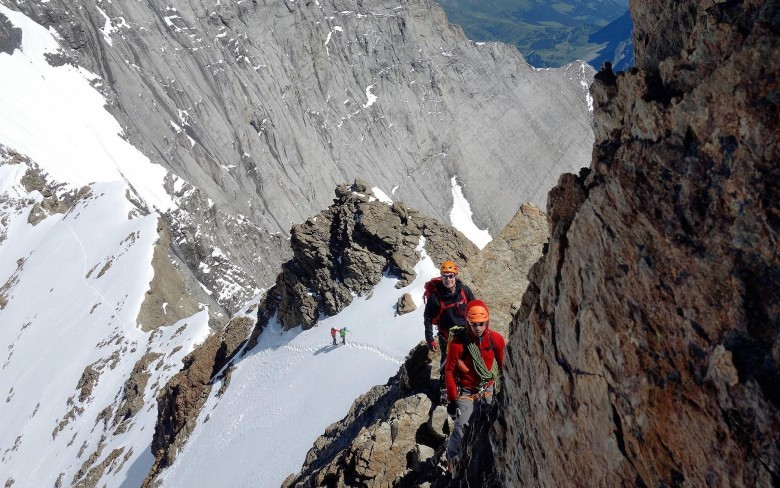
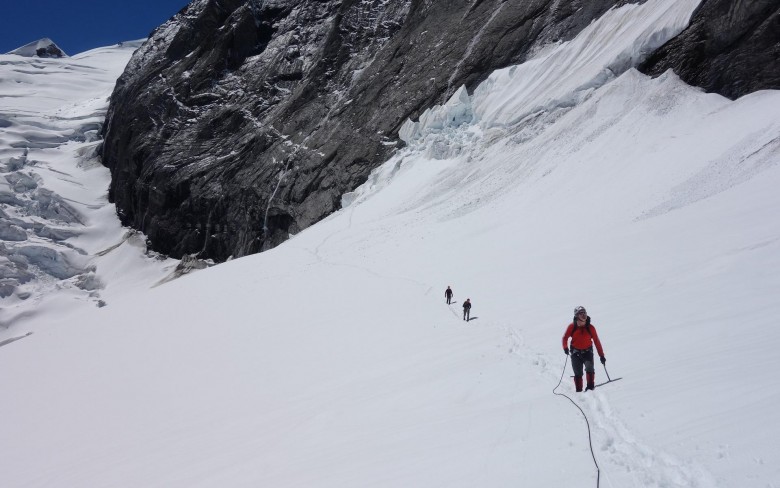
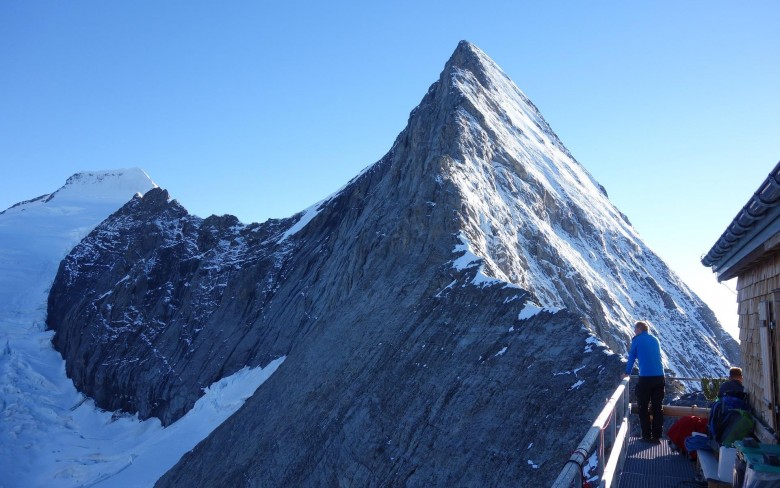
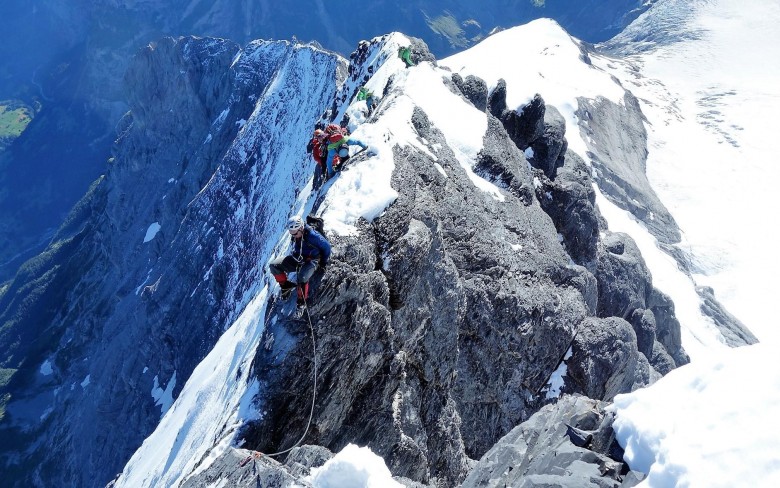
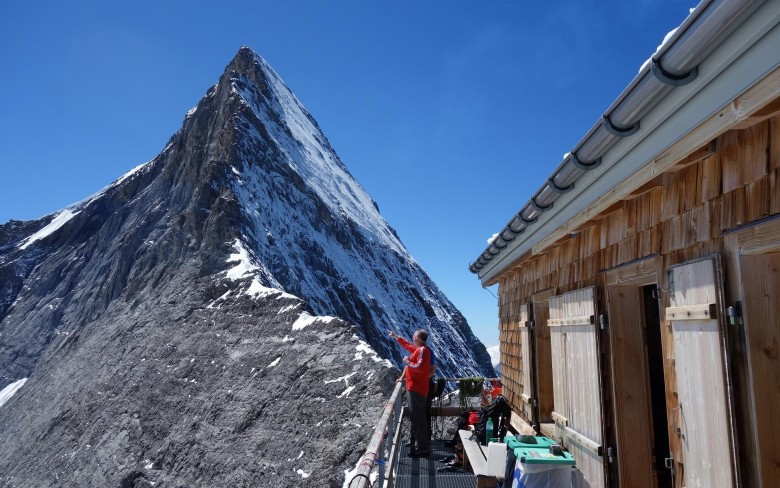
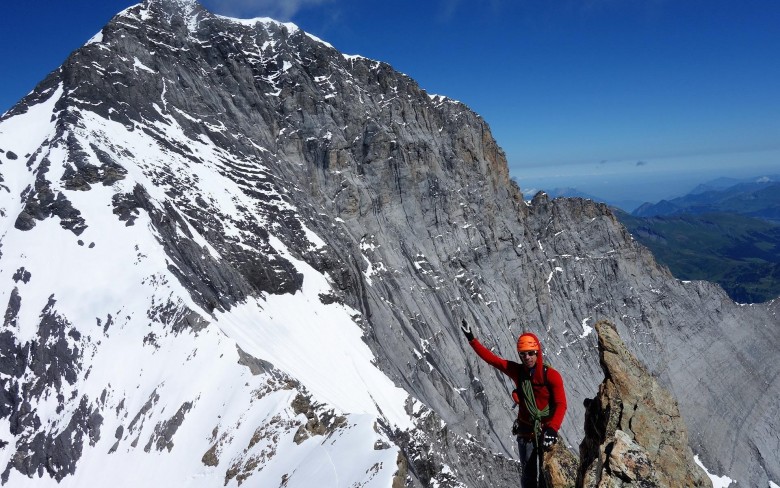
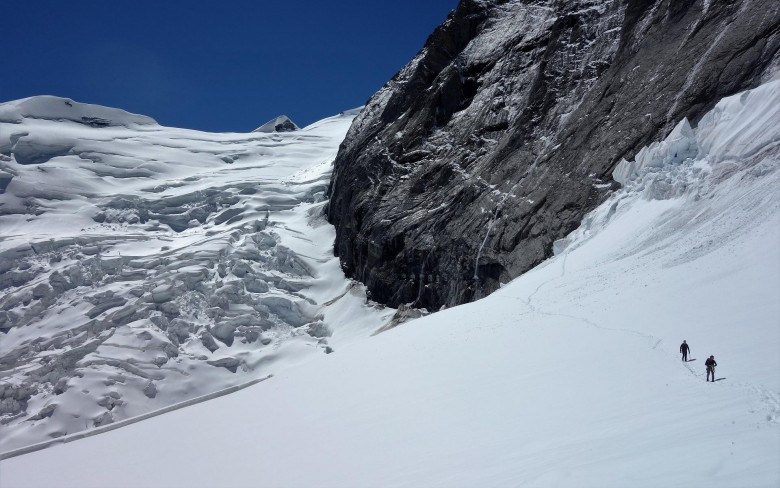
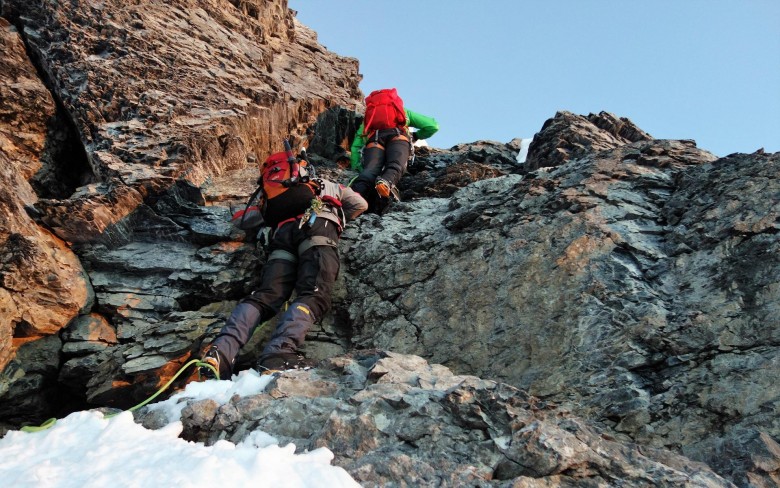
 Travel Website Development
Travel Website Development